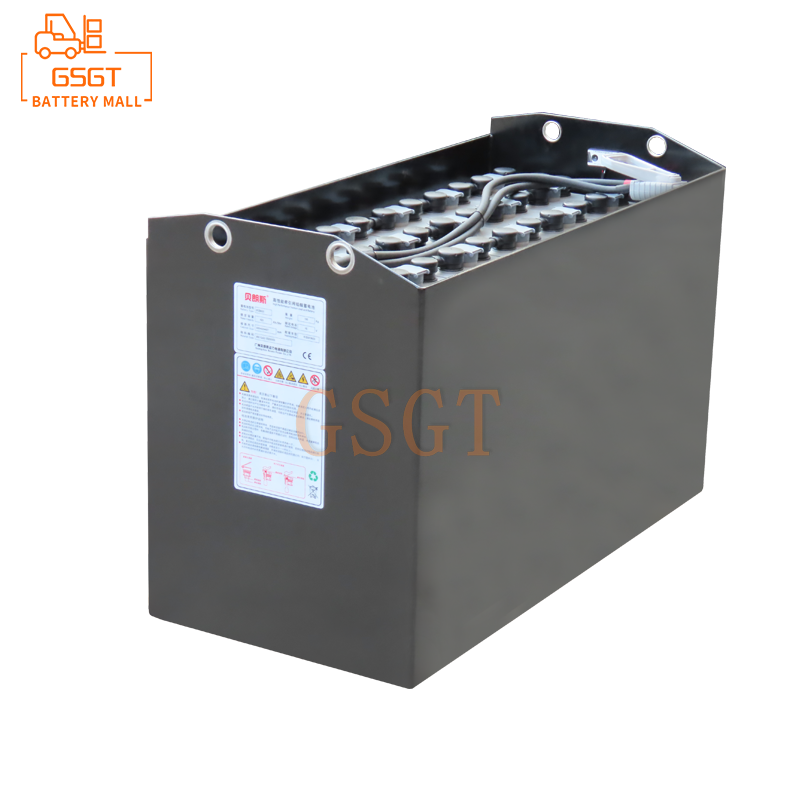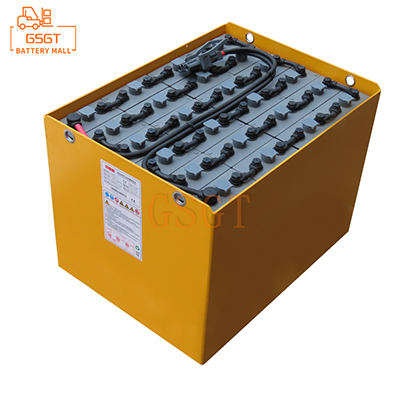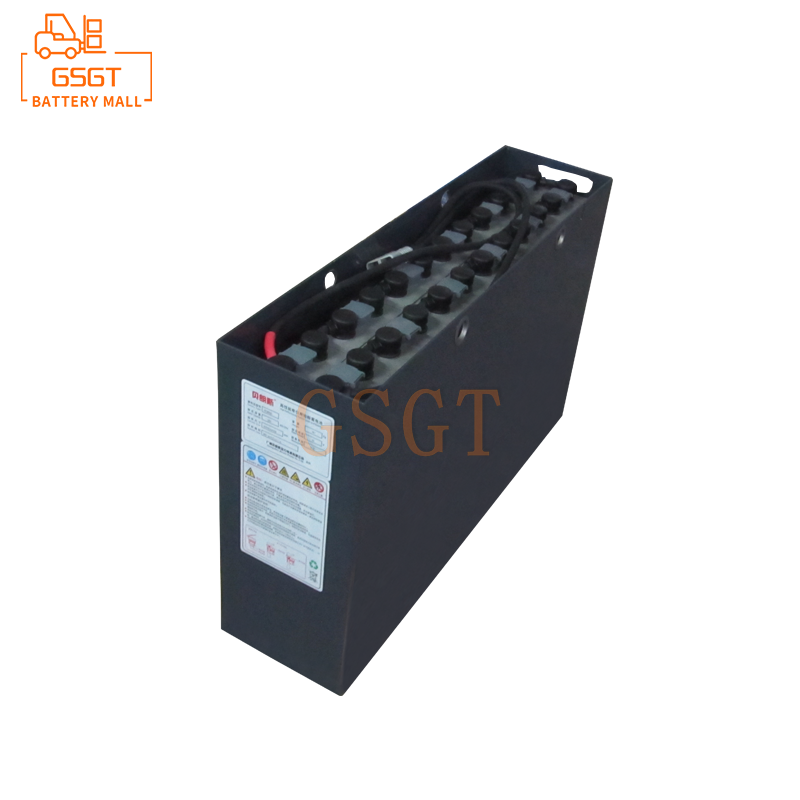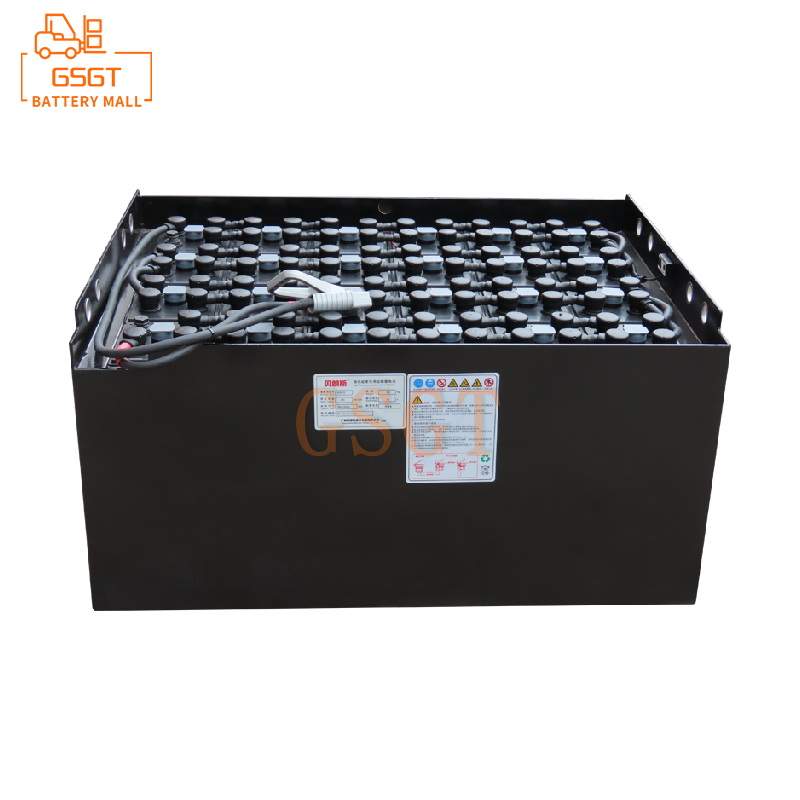Time:2025-05-09 11:13:33
Browse:466
Abstract
This article deeply explores the importance and operation methods of equalization charging for lead-acid batteries in forklifts. By analyzing the working principle and characteristics of lead-acid batteries, the influence of unbalanced charging on the battery life, performance and safety is expounded, and the key position of balanced charging in the maintenance of forklift batteries is clarified. Meanwhile, the specific operation process, precautions and applicable methods of different types of forklift lead-acid batteries of equalization charging are introduced in detail, aiming to provide comprehensive and practical references for forklift users and maintenance personnel, so as to ensure the efficient and stable operation of forklift lead-acid batteries and reduce the usage cost.
1. Introduction
In the modern logistics and warehousing industry, forklifts, as indispensable handling equipment, their operational efficiency and reliability directly affect the production and operation costs of enterprises. Lead-acid batteries, as the main power source of electric forklifts, their performance and lifespan are of vital importance to the operation of forklifts. With the increase in the frequency of forklift usage and the rise in work intensity, the maintenance and upkeep of lead-acid batteries have become increasingly prominent. Equalization charging, as an important measure in the maintenance of lead-acid batteries, is of great significance for extending the battery life, improving its working performance and safety. However, at present, many forklift users and maintenance personnel have insufficient understanding of the importance of equalization charging, and there are also many misunderstandings in the operation methods, which leads to premature damage of the battery and increases the operating costs of enterprises. Therefore, in-depth research on the importance and operation methods of equalization charging of lead-acid batteries in forklifts has significant practical significance.
2. Working Principle and Characteristics of Lead-Acid Batteries for Forklifts
(1) Working Principle
Lead-acid batteries are a type of chemical power source, and their working principle is based on REDOX reactions. During the charging process, electrical energy is converted into chemical energy. The lead dioxide at the positive electrode and the spongy lead at the negative electrode undergo chemical reactions with sulfuric acid respectively, generating lead sulfate and water. During the discharge process, chemical energy is converted into electrical energy, and lead sulfate is again transformed into lead dioxide, spongy lead and sulfuric acid. This reversible chemical reaction enables lead-acid batteries to achieve charge and discharge cycles, providing power for forklifts.
(2) Characteristics
1. ** Capacity Characteristics ** : The capacity of lead-acid batteries is influenced by multiple factors, such as temperature, discharge current, and depth of charge and discharge. Generally speaking, a decrease in temperature will lead to a reduction in battery capacity. The greater the discharge current, the smaller the capacity that the battery can release. Excessive depth of charging and discharging can also have a negative impact on battery capacity and shorten battery life.
2. ** Self-discharge Characteristic ** : Lead-acid batteries have a self-discharge phenomenon, that is, when not in use, the chemical reactions inside the battery will cause the power to gradually decrease. The speed of self-discharge is related to factors such as the quality of the battery and the storage environment temperature. High-temperature environments can accelerate the self-discharge process. Therefore, when storing lead-acid batteries, it is necessary to pay attention to the control of the ambient temperature.
3. ** Individual Cell consistency ** : In lead-acid battery packs, there are certain performance differences among individual cells, which is the issue of individual cell consistency. This difference will gradually increase with the increase of usage time, leading to an imbalance in the battery pack during charging and discharging. An unbalanced battery pack will accelerate the aging and damage of individual cells, reducing the performance and lifespan of the entire battery pack.
3. The Impact of Unbalanced Charging of Lead-Acid Batteries in Forklifts
(1) Impact on Battery Life
Unbalanced charging can lead to inconsistent charging and discharging degrees of each individual battery in the battery pack. Some individual cells may be overcharged, while others are undercharged. Overcharging will generate a large amount of heat and gas inside the battery, accelerate the aging and corrosion of the battery plates, and shorten the battery life. Insufficient charging will lead to sulfation of the battery plates, reducing the battery's capacity and charging and discharging performance, and also shortening the battery's service life. Long-term unbalanced charging will significantly reduce the overall lifespan of the battery pack and increase the cost for enterprises to replace batteries.
(2) Impact on Battery Performance
Unbalanced charging can cause unstable output voltage of the battery pack, leading to problems such as insufficient power and unstable speed during the operation of the forklift. Meanwhile, during the discharge process of an unbalanced battery pack, some individual cells will first reach the discharge termination voltage, while others still have a considerable amount of power. This will limit the available capacity of the entire battery pack, reduce the forklift's endurance, and affect the forklift's working efficiency.
(3) Impact on Security
If the large amount of heat and gas generated by overcharging cannot be dissipated in time, it may cause the internal pressure of the battery to rise, leading to safety accidents such as battery swelling, rupture and even explosion. In addition, unbalanced charging may also lead to a decline in the insulation performance of the battery pack, increasing the risk of leakage and posing a threat to the personal safety of the operators.
4. The Importance of Equalization Charging for Forklift Lead-Acid Batteries
(1) Extend the battery life
Equalization charging can make the power of each individual battery in the battery pack tend to be consistent, avoiding overcharging or undercharging of individual cells, thereby slowing down the aging and corrosion of the battery plates, preventing sulfation of the plates, and effectively extending the service life of the battery. Regular equalization charging can extend the lifespan of forklift lead-acid batteries by 20% to 30%, reducing the equipment maintenance costs of enterprises.
(2) Improve the performance of the battery
Equalization charging helps improve the output voltage stability and overall capacity of the battery pack. When the power of each individual battery is balanced, the battery pack can release electrical energy more efficiently, providing stable and sufficient power for the forklift, increasing its operating speed and endurance, and enhancing work efficiency. Meanwhile, a balanced battery pack can better perform during charging and discharging, reduce energy loss and improve energy utilization efficiency.
(3) Ensure safety
Through equalization charging, excessive heat and gas generated by the battery due to overcharging can be avoided, reducing the probability of safety accidents such as battery swelling, rupture and explosion. In addition, a balanced battery pack can maintain good insulation performance, reduce the risk of leakage, and create a safe working environment for operators.
5. Operation Method for Equalization Charging of Lead-Acid Batteries in Forklifts
(1) Preparatory Work
1. ** Check the battery appearance ** : Before performing equalization charging, it is necessary to carefully inspect the battery's appearance to see if there is any swelling, cracking, leakage, etc. If any appearance damage to the battery is found, it should be repaired or replaced first to ensure that the battery is in a safe and rechargeable state.
2. ** Measure the density of the electrolyte ** : Use a hydrometer to measure the density of the electrolyte inside the battery. Under normal circumstances, the density of the electrolyte in lead-acid batteries should be within the specified range. If the density of the electrolyte is too low or too high, distilled water or special lead-acid battery electrolyte should be added according to the actual situation for adjustment.
3. ** Check the connection lines ** : Inspect whether the connection lines between the battery pack and the charger are firm and in good contact, ensuring there is no loosening, oxidation or damage. At the same time, check whether the parameter Settings of the charger match the battery pack, including parameters such as charging voltage and current.
(2) Specific Operation Procedures
1. ** Connect the charger ** : Correctly connect the forklift lead-acid battery to the dedicated equalizing charger. When connecting, pay attention to the correspondence of the positive and negative poles to avoid reversing them, which may cause battery damage or charger failure.
2. ** Set charging parameters ** : According to the battery specifications and the user manual, set the appropriate charging voltage, current and charging time. Generally speaking, the voltage of equalization charging is slightly higher than that of normal charging, the charging current is smaller, and the charging time is longer.
3. ** Start charging ** : After setting the charging parameters, start the charger to begin equalization charging. During the charging process, it is necessary to closely monitor the changes in the battery's temperature, voltage and electrolyte. If the battery temperature is too high (exceeding 45℃), charging should be suspended and resumed only after the temperature drops. Meanwhile, regularly measure the voltage of each individual battery to ensure that the voltage of the battery pack is balanced during the charging process.
4. ** Completion of Charging Determination ** : When the battery voltage reaches the set equalization charging voltage and remains stable for a certain period of time, and the voltage differences among individual cells are within the allowable range, it can be determined that the equalization charging has ended. At this point, first turn off the power of the charger, and then disconnect the battery from the charger.
(3) Equalization charging methods for lead-acid batteries of different Types of forklifts
1. ** Ordinary Lead-acid battery ** : When performing equalization charging on ordinary lead-acid batteries, simply follow the conventional operation methods mentioned above. During the charging process, it is necessary to regularly check the liquid level of the electrolyte, add distilled water in time, and maintain the normal liquid level of the electrolyte.
2. ** Maintenance-free lead-acid batteries ** : Although maintenance-free lead-acid batteries do not require frequent addition of electrolyte, they still need to be equalized charged. The equalization charging method for maintenance-free lead-acid batteries is basically the same as that for ordinary lead-acid batteries, but during the charging process, there is no need to check the density of the electrolyte or add electrolyte. However, it is still necessary to pay attention to the temperature and voltage changes of the battery to ensure the safety and effectiveness of the charging process.
6. Precautions for Equalization Charging of Lead-Acid Batteries in Forklifts
1. ** Environmental Requirements ** : Equalization charging should be carried out in a well-ventilated, dry environment free of flammable and explosive materials to prevent safety accidents caused by gases produced during the charging process. At the same time, attention should be paid to the control of the ambient temperature. Try to keep the charging environment temperature between 20 and 25℃. Both excessively high and low temperatures will affect the charging effect and battery life.
2. ** Personnel Safety ** : When performing equalization charging operations, operators should wear protective gloves, goggles and other protective equipment to prevent the electrolyte from splashing onto the skin or eyes. In case of accidental contact with the electrolyte, rinse immediately with plenty of water and seek medical attention promptly.
3. ** Equipment Maintenance ** : Regularly inspect and maintain the equalizing charger to ensure its stable performance and accurate parameters. If a malfunction of the charger is found, it should be repaired or replaced in time. Do not use a faulty charger to charge the battery to avoid damaging it.
4. ** Charging Frequency ** : The frequency of equalization charging should be determined based on the usage of the forklift and the condition of the battery. Generally speaking, for frequently used forklifts, it is recommended to perform equalization charging once every 1 to 2 months. For forklifts with lower usage frequency, equalization charging can be carried out once every 3 to 6 months. However, if it is found that the battery performance declines or the voltage is unbalanced, etc., equalization charging should be carried out in a timely manner.
7. Conclusion
Equalization charging of lead-acid batteries in forklifts is of non-negligible importance for extending the battery life, improving its working performance and ensuring safety. By deeply understanding the working principle and characteristics of lead-acid batteries and recognizing the numerous negative impacts brought about by unbalanced charging, we have become more clear about the crucial position of balanced charging in the maintenance of forklift batteries. In actual operation, strictly following the correct operation methods for balanced charging and paying attention to relevant precautions can effectively enhance the reliability and stability of forklift lead-acid batteries, reduce the operating costs of enterprises, and provide a strong guarantee for the logistics and warehousing work of enterprises. With the continuous development of the logistics industry, the use of forklifts will become more widespread. Strengthening the research and application of balanced charging of lead-acid batteries in forklifts has broad development prospects and important practical significance.

$2450

$3405

$1060

$5030

MESSAGE
Professional And Efficient
Security
Affordable Price
Professional Services